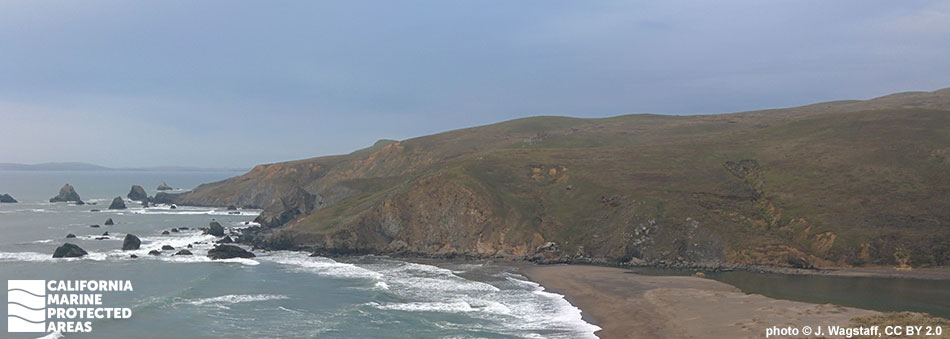
Overview
Located between Dillon Beach and Bodega Bay, just south of the Marin/Sonoma County line, lies Estero de San Antonio State Marine Recreational Management Area (SMRMA). Estero, Spanish for estuary, describes this low-lying sand flat. The SMRMA begins where the mouth of the larger Estero de San Antonio meets the Pacific Ocean, and runs approximately one mile into this estuarine environment, protecting less than a tenth of a square mile of habitat. Tidewater goby, ghost shrimp, mud shrimp, and starry flounder, as well as significant sea and shorebird aggregations depend upon this area for food and nursery grounds.
A sandbar often forms at the mouth of the estuary during the summer and fall, damming it until winter rains arrive. This creates a safe refuge for nesting shorebirds. While the remote beach is only accessible by boat or kayak, this area offers secluded and remote opportunities for wildlife and nature viewing.
Regulations
It is unlawful to injure, damage, take, or possess any living, geological, or cultural marine resource, EXCEPT:
Take of waterfowl in accordance with general waterfowl regulations is allowed.
California Code of Regulations Title 14, Section 632(b)(42)(opens in new tab)
Quick Facts
Estero de Limantour SMR
MPA size: 0.07 square miles
Shoreline span: 1.0 miles
Depth range: 0 to 10 feet
Habitat composition*:
- Estuary: 0.07 square miles
- Eelgrass: Less than 0.01 square miles
*Habitat calculations are based on three-dimensional area and may exceed the total MPA area listed above.